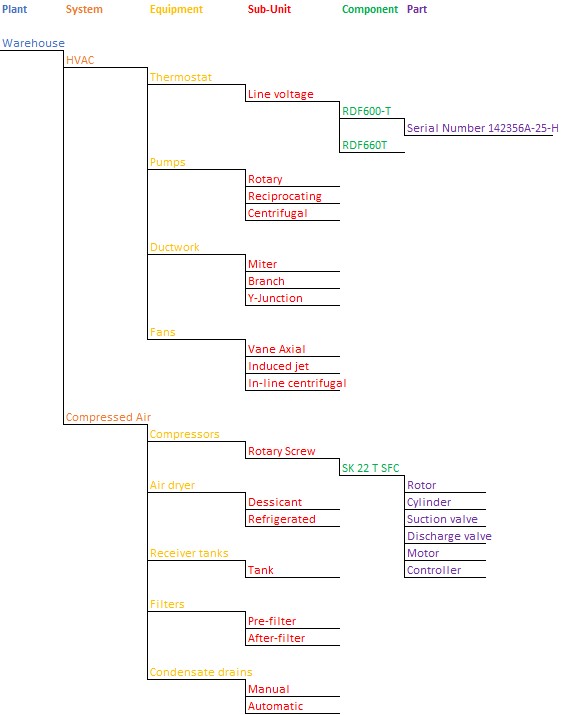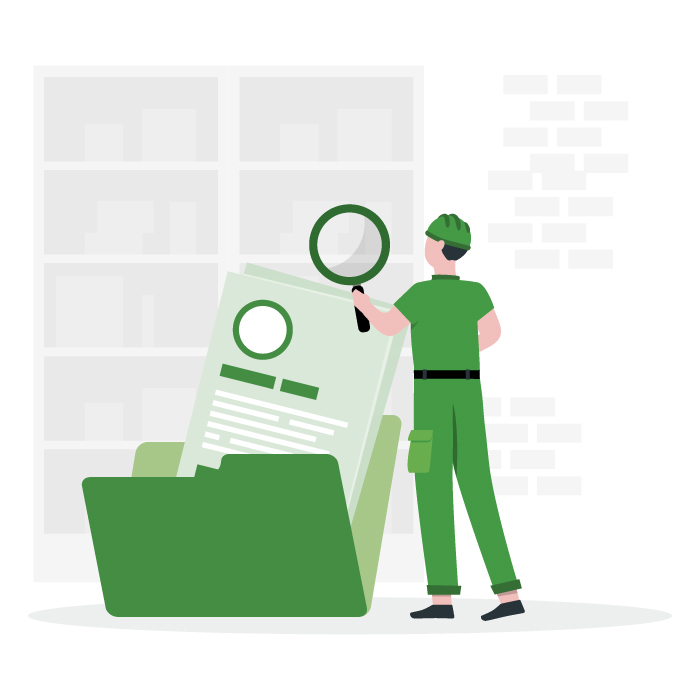Asset Hierarchy
Everything you ever needed to know about asset hierarchy
What is an asset hierarchy?
An asset hierarchy represents a systematic way to structure an organization’s asset information. It lists all physical assets, categorizes them, and groups them logically. Most asset hierarchies create a top-down structure using a parent-child relationship.
This helps management control and allows quick and easy access to asset information while improving data analysis.
An asset hierarchy is not limited to a single location or department, as it can be company-wide and across multiple countries. In these circumstances, the hierarchy structure will include geographical or departmental locations.
While you could create an asset hierarchy in a spreadsheet, the optimal approach requires the use of a CMMS software.
Asset hierarchy example for a warehouse
Following is an example of the structure of an asset hierarchy for a warehouse, showing part of the heating, ventilation, and air conditioning system (HVAC) and the compressed air system.

Note that we’ve shown only two complete pathways for brevity and that the thermostat ends in a serial number, having no maintainable parts, while the compressor goes a level deeper.
The warehouse will have multiple systems like power, water, and lighting. Each system will include multiple pieces of equipment and sub-units.
This example makes it easy to understand how large the asset hierarchy can be for a complex plant, underscoring the need for digitalization.
CMMS asset hierarchy example
The CMMS will record the location of each part, including the time at which the technician installed the item. You will have access to overhaul details, purchased date, supplier info, and any other data you decided to track.
Below is a short video that shows how you can quickly build an asset hierarchy inside Limble CMMS using our drag and drop and duplicate functionalities.
Besides being able to quickly find the right asset information, properly structuring assets inside your CMMS helps you generate and compare detailed maintenance reports for assets, components, and their subcomponents.
You can track maintenance costs, metrics like MTTR and MTBF, the improvements or decreases in reliability, and similar.
ISO 14224 asset hierarchy benchmark
While no generic benchmarks exist for the development of asset hierarchies, some standards cover the topic, including ISO 55000 and 14224. ISO 14224 relates to the petroleum and natural gas industries, and covers the collection and exchange of reliability and maintenance data for equipment.
However, it has since gained wide acceptance as a de-facto reference for establishing an asset hierarchy. It describes an information structure, providing suggested data categories and formats.
You can use it as a reference while building your own asset hierarchy.
Free Essential Guide to CMMS
Discover everything you need to know about CMMS in this comprehensive guide. Begin your maintenance journey now!

The benefits of a well-structured asset hierarchy
Having all of your physical assets listed in a parent-to-child hierarchy streamlines your business processes, providing numerous benefits:
- One centralized database of all assets. Having a single database reduces the risk of data duplication and obsolescence, allowing easy management and backup for data security purposes.
- Single source of truth for all departments. A central asset hierarchy built into a CMMS provides a single source of truth. Every department has access to the same maintenance data, preventing data silos that cause errors and discrepancies.
- Enhanced data analysis. Using a standardized structure and naming convention ensures searches and analyses pull up all the assets complying with the terms entered, ensuring data integrity.
- Improved productivity. A well-thought-out asset hierarchy provides all employees with a quick and easy way to find the required asset data.
- Better cost control. Having all assets listed in a particular structure facilitates detailed cost comparisons between similar assets. It also allows you to drill down to component and subcomponent levels to understand capital, lifecycle, maintenance, and disposal costs.
Long story short, taking your time to build a proper asset hierarchy is worth the trouble. Paired with a flexible, modern CMMS software, it will significantly improve your enterprise asset management.
Want to see Limble in action? Get started for free today!
Enhance your asset hierarchy with Limble CMMS
Pairing a structured asset hierarchy with a CMMS is crucial for businesses aiming to refine their asset management. Although building an asset hierarchy requires careful planning, Limble CMMS simplifies the process significantly. Feel free to contact us or request a demo to discover how Limble CMMS can make your asset management more efficient.


